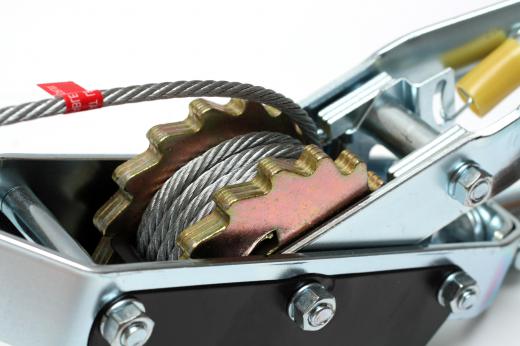A hoist lift is a device used to lift and move heavy objects By means of a chain and hook system or another means of lifting. The design of the hoist lift can vary significantly according to its intended purpose; in factories and warehouses, the lift may include a chain that runs around a wheel, which is turned mechanically by a motorized unit. This unit can be moved along a track mounted high above the items being lifted, allowing the user to both lift the item and move it to a different location.
This system requires a pulley wheel that controls the cable or chain of the hoist lift. A motor usually powers the pulley wheel, turning it in one direction or another, depending on whether an object needs to be lowered or raised. The cable or chain will wrap around the pulley wheel as it turns, or it will unwrap from the wheel. Once the chain or cable has been completely raised, the hook at the end of the cable will prevent any more movement of the pulley. Very often the controls for such a unit will dangle by a wire, and a hand unit can be used by an operator standing on the ground to control the feed of the wire.

Not all host lift designs feature a motor. Some can be operated by hand instead; hand cranks, for example, can be turned to either feed or retract the cable, and some designs feature a ratchet for security. A come-along, for example, uses a hand lever that is pulled back and forth, and a ratchet system ensures the cable does not slip during operation.
Other hoist lift designs are meant for specific purposes. A truck lift, for example, might feature a boom that mounts to the bed of the truck or to the frame beneath the bed. Heavy objects can then be lifted by a chain and hook system that mounts to the boom arm of the hoist lift. The boom very often swivels or pivots, allowing the user to connect the chain and hook to an item on the ground, then transfer that item into the truck bed by swiveling or pivoting it into the bed. A similar design is often used to lift engines out of vehicles or mount them in the engine compartment at installation. Such a boom hoist will have a solid base that is often mounted onto wheels or casters.
